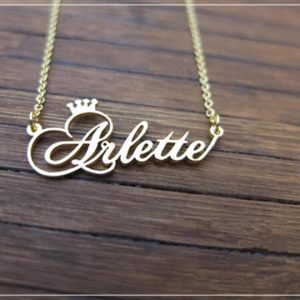
How Long Does It Take to Make Custom Jewelry? A Comprehensive Guide
Introduction
Imagine wearing a piece of jewelry that tells your story, embodies your personality, and reflects your unique style. Custom jewelry provides this opportunity, allowing you to express yourself through intricate designs, meaningful symbols, and personalized touches. However, the journey from concept to final piece can be captivating, and you might wonder: how long does it take to make custom jewelry?
This comprehensive guide delves into everything you need to know about the custom jewelry creation process, from design ideation to final delivery. Along the way, we'll explore the factors that influence the timeline, typical timeframes, tips for expediting the process, and essential considerations for a seamless experience.
Design Phase: Bringing Your Vision to Life
The custom jewelry journey begins with the design phase, where your vision starts to take shape. This can be a collaborative experience between you and the jewelry designer, involving discussions about your preferences, inspiration, and desired outcome. During this stage, you'll likely explore these key steps:
- Conceptualizing and brainstorming: Share your ideas, inspirations, and any specific elements you envision in your custom piece.
- Exploring design options: Collaborate with the designer on sketches, initial concepts, and alternative interpretations of your vision.
- Finalizing the design: Upon reaching a consensus, the finalized design will be translated into technical specifications that guide the fabrication process.
This phase can take anywhere from a few days to several weeks, depending on the complexity of the design, communication clarity, and the number of revisions required.
Production Phase: Transforming Design into Reality
Once the design is finalized, the production phase commences, where skilled artisans and jewelers bring your vision to life. This intricate process usually involves these steps:
- Creating the mold: For intricate designs, a mold or model might be crafted to ensure precise and consistent results.
- Metalworking and shaping: The chosen metal is meticulously worked upon, employing techniques like stamping, casting, or forging.
- Stone setting and embellishments: If your design incorporates gemstones or other embellishments, they are carefully set and secured with precision.
- Polishing and finishing touches: The final stage involves meticulous polishing and refinishing to achieve the desired brilliance and luster.
The production phase can span from a week to several months, depending on the complexity of the design, the chosen materials, and the jeweler's production capacity.
Factors Influencing the Timeline
Several factors can influence the time it takes to create custom jewelry, including:
- Design complexity: Intricate designs with multiple components and intricate details require more time and effort compared to simpler pieces.
- Materials used: Choosing rare or unusual materials might necessitate specialized sourcing and potentially extend the timeline.
- Production techniques: Certain techniques, like hand-engraving or bespoke stone setting, are more time-consuming than others.
- Jeweler's workload and schedule: Existing commitments and the overall workload of the chosen jeweler can impact the turnaround time.
Typical Timeframes for Custom Jewelry
While timelines can vary, here's an approximate range you can expect:
- Simple and classic designs: Expect a timeline of 2-4 weeks for straightforward pieces like a plain gold pendant or ring.
- Designs with gemstones or embellishments: These pieces often take 4-8 weeks to complete, depending on the complexity of the setting and the stones used.
- Intricate or highly customized designs: More complex designs with elaborate details, multiple components, or unique features can take several months, ranging from 8 to 16 weeks or longer.
Tips for Expediting the Process
If you're working with a specific deadline, consider these tips to potentially expedite the process:
- Start early: Planning ahead provides ample time for design discussions, material sourcing, and production.
- Opt for simpler designs: If time is of the essence, consider a less intricate design to reduce the production time.
- Provide clear and detailed instructions: Leaving no room for ambiguity in your design brief can streamline the workflow.
- Maintain open communication: Regular communication with the jeweler ensures clarity and timely clarification of any questions.
Essential Considerations for a Seamless Experience
Here are some additional factors to consider for a smooth and enjoyable custom jewelry experience:
- Choose a reputable and experienced jeweler: Their expertise and craftsmanship will greatly impact the quality and timeliness of your piece.
- Set realistic expectations: Be aware of the potential timelines and remain flexible for unforeseen circumstances that might arise.
- Communicate openly and effectively: Maintaining clear communication with the jeweler throughout the process is essential.
- Enjoy the process: Embrace the experience of co-creating a piece that reflects your unique style and vision.
Conclusion
Creating custom jewelry is a journey that blends personal expression with the artistry of skilled jewelers. While the time it takes to bring your vision to life can vary, understanding the design and production phases, the influencing factors, and tips for optimization will help you navigate this exciting process with realistic expectations and a rewarding outcome. So, start dreaming, explore your creativity, and embark on the journey of creating a custom jewelry masterpiece that tells your story in precious metal and captivating design.

